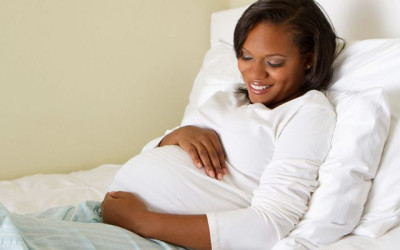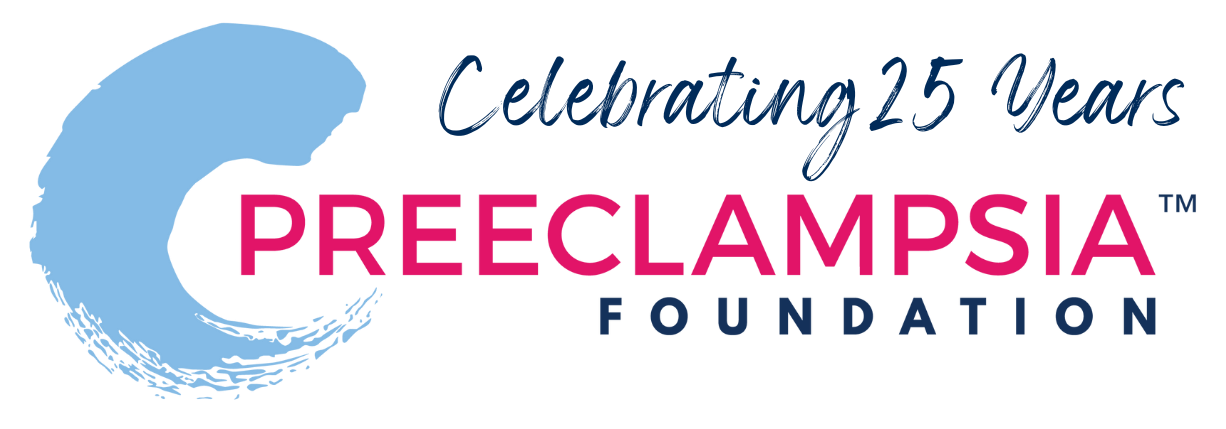
Preeclampsia Awareness Month: Blood Pressure Key to Healthy Pregnancy
Preeclampsia Foundation launches #CheckKnowShare Campaign
May 1, 2020 - Melbourne, FL - As preeclampsia remains a leading cause of maternal and infant mortality and morbidity, the Preeclampsia Foundation is urging pregnant and postpartum women to check their blood pressure, know and understand their numbers, and share with their healthcare provider. Hypertension – or high blood pressure – is the leading indicator of preeclampsia, a dangerous complication of pregnancy, and life-threatening to both the mother and her baby.
“Preeclampsia can happen to any woman, any pregnancy,” said Eleni Tsigas, CEO of the Preeclampsia Foundation. “In this time of COVID-19, women need to take charge of their health especially when healthcare providers may reduce prenatal and postpartum visits or conduct them via telehealth. This demonstrates now more than ever the importance of at-home blood pressure monitoring”.
The #CheckKnowShare campaign will teach women how to take their blood pressure, understand their numbers, and talk to their healthcare provider, and is the theme for May’s Preeclampsia Awareness Month.
“By teaching women to measure and track their blood pressure, they become an active partner in their healthcare - for their safety and the safety of their baby,” says Tsigas.
Healthcare providers may have specific instructions for their patients. If not, women are encouraged to take twice daily readings, download a blood pressure log, and view a how to properly take your blood pressure at home video at www.preeclampsia.org/blood-pressure.
If a woman is pregnant or within 6 weeks after delivery, she should immediately report to her healthcare professional any readings where the top number (systolic) is 140 or higher or the bottom number (diastolic) is 90 or higher. If the top number is ever higher than 160 or the bottom number is over 110, she should go to Labor and Delivery or an Emergency Room immediately. If she has already had her baby, she should be sure to tell the provider that she recently delivered.
Preeclampsia typically can occur any time after the 20th week of pregnancy and is marked by:
- elevated blood pressure
- protein in the urine
- changes in vision - blurred, seeing spots
- nausea after mid pregnancy
- swelling in hands and face
- weight gain of more than 5 pounds in a week
- difficulty breathing, gasping or panting
To monitor their pregnancy for preeclampsia and reduce risk, women should:
- attend all prenatal appointments, which may be by phone or videoconference
- talk to your doctor about your particular risk for preeclampsia and what you can do to minimize it
- monitor your blood pressure and weight regularly and contact your doctor immediately if either becomes unexpectedly high
- know your family history of pregnancy complications, high blood pressure and heart disease
- eat right, exercise regularly and maintain a healthy weight
- do not smoke
Related Articles

A visual approach to understand preeclampsia patient experiences from the Society for Maternal-Fetal Medicine & Preeclampsia Foundation
1753716089.png)
Preeclampsia survivors and their supporters from across the United States will hit the pavement on Saturday, August 23, 2025, as part of the sixth annual Promise Walk Wherever virtual event to benefit...

Even after more than twenty years, Mavis “Mae” Stephens, a 3x preeclampsia survivor, vividly remembers the challenges she faced during her pregnancy with her second son. She did everything...

Recientemente, me encontré con una publicación en las redes sociales señalando la crisis de salud maternal desde la perspectiva de una mujer negra. Una persona respondió a...

Meghan Markle is opening up about her experience with postpartum preeclampsia in the debut episode of her new podcast, Confessions of a Female Founder. In the episode with her first guest and clo...

GAP—SPIRIN campaign gets low-dose aspirin to those most at risk to help close the maternal health gap in preeclampsia ________ NEW YORK, January 23, 2025/PRNewswire/ – In recognition of...
